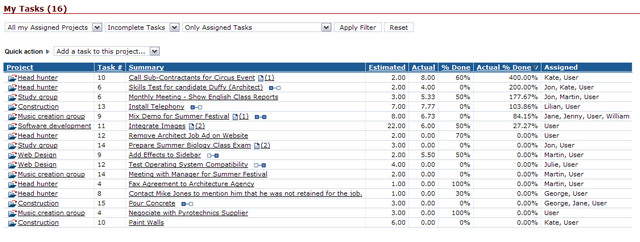Not, it's not how much fudge you can cram in yourself before you start feeling icky (although I wish!).
The fudge ratio, as explained in this post from LifeHacker, reflects how good you are as estimating the time required to accomplish something. To get your fudge ratio, you must compare your time estimates with your actual times.
Here's an example:
- You estimate it will take 1 hour to implement changes to the company's website. It turns out Murphy had his way and it took you 2 hours to implement the changes, meaning 200% of the estimated time.
- You estimate it will take 2 hours to correct a database query, but you found the error faster than you though you would and it only took 30 minutes to fix it. In this case, your actual time is 25% of the estimated time.
- You estimate it will take 5 hours to design a new application logo, but you forgot about the approval process and it ended up taking 8 hours, 160% of the estimated time.
If you keep tracking estimate VS actual time, you will be able to get an average fudge ratio. In the example above, if we make an average of the individual fudge percentages (200, 25, 160), we end up with the fudge ratio of 128%, or 1.28.
When you know your fudge ratio, as the LifeHacker post explains, you can pad your estimates accordingly. This will help you give more accurate estimates.
The problem: most of us aren't very good at taking notes
Let's face it: most of us will start with good intentions of keeping a spreadsheet somewhere with the estimated numbers and the actual numbers. Unfortunately, as deadlines get closer and the task pile keeps getting higher, we'll forget to keep the spreadsheet up to date and we will never be able to accumulate enough data to get a good fudge ratio.
Most of us, however, use a project management system. Most project management systems already include estimated times for tasks. As you work on your task in AceProject, you can log your time for that task very easily:
- Fill out a time sheet at the end of the week
- Add to your time sheet directly from the task
- Just start a timer.
To get your fudge ratio, all you have to do is go in My Office and customize your task list with the Actual % Done field included:
With a task list like this, you can automatically see whether you tend to be optimistic with your estimates. Export your list to Excel, get an average from the Actual % Done and there you are. You have your fudge ratio.
Now that you have it, don't be afraid fudge things up
Now that you've got your fudge ratio, use it. When you're making estimates, remember your fudge ratio and apply it. If we use our example's fudge ratio (1.28), when estimating a task to take 10 hours, you should put in 13 hours (10 multiplied by the fudge ratio of 1.28). This allows breathing space for Murphy's Law to affect your project.

Leave A Comment